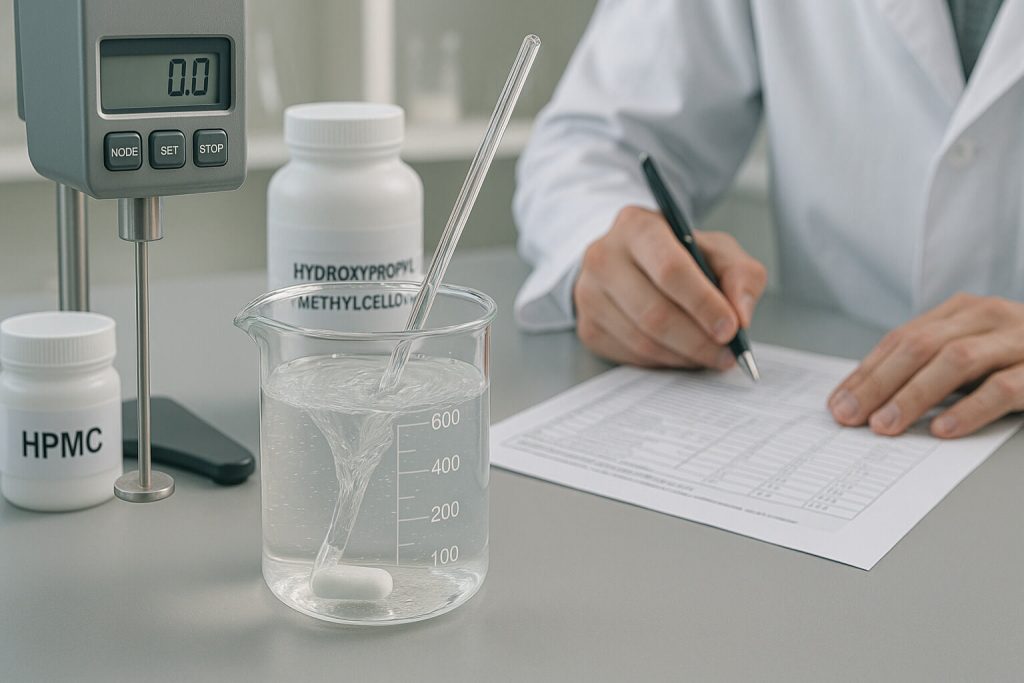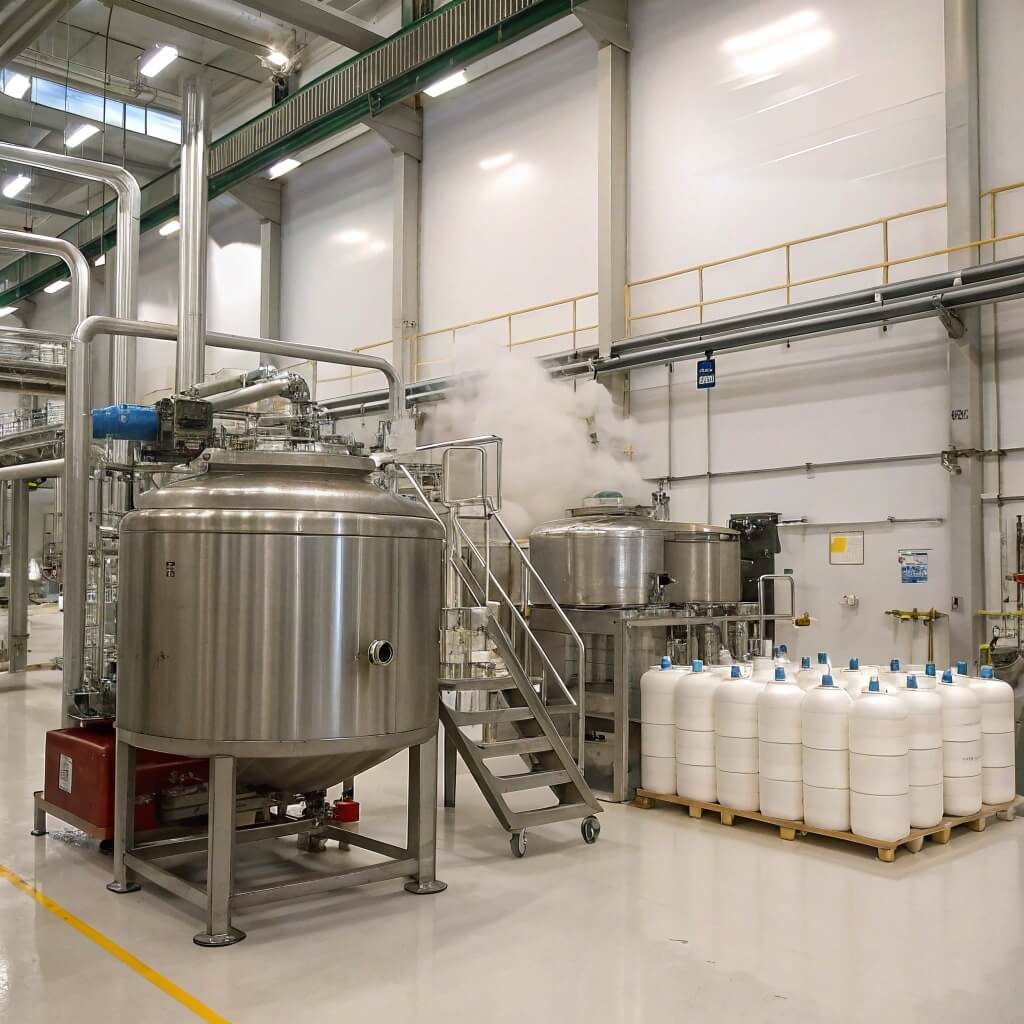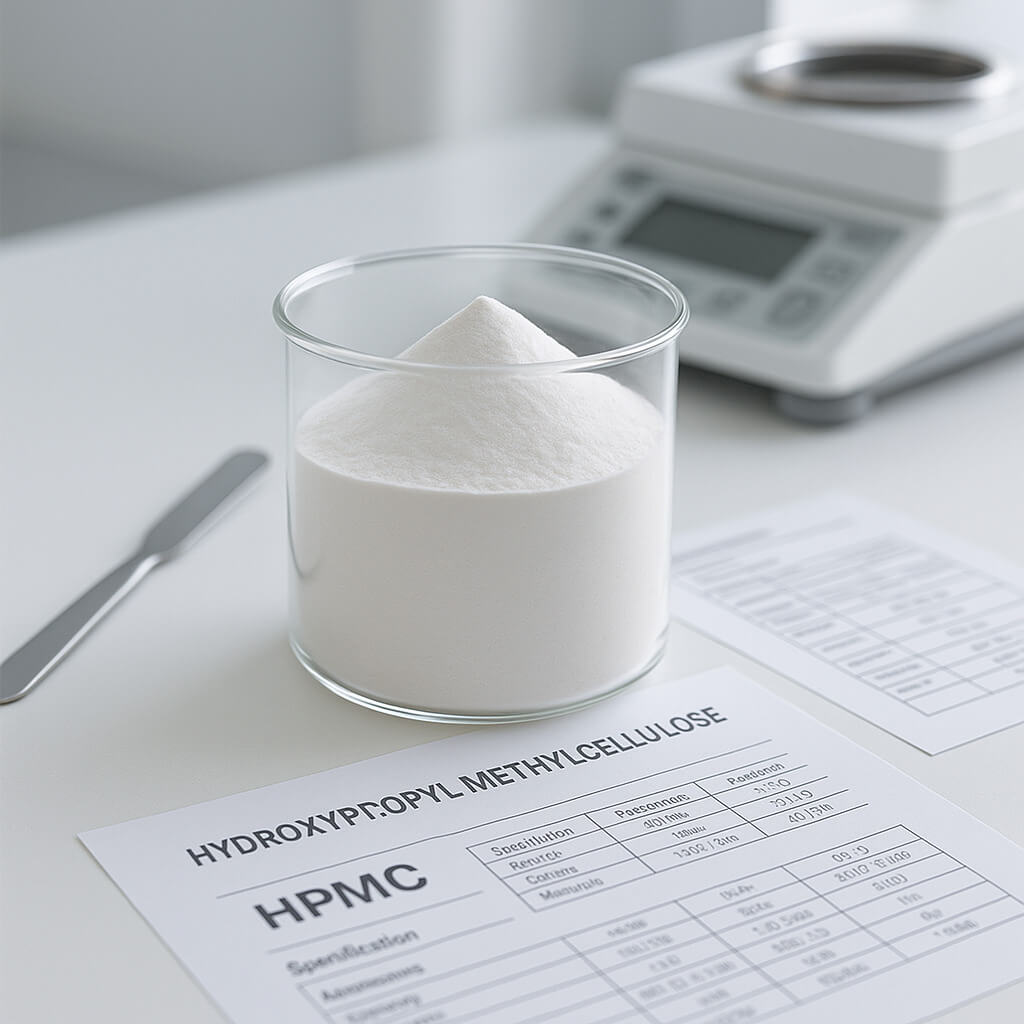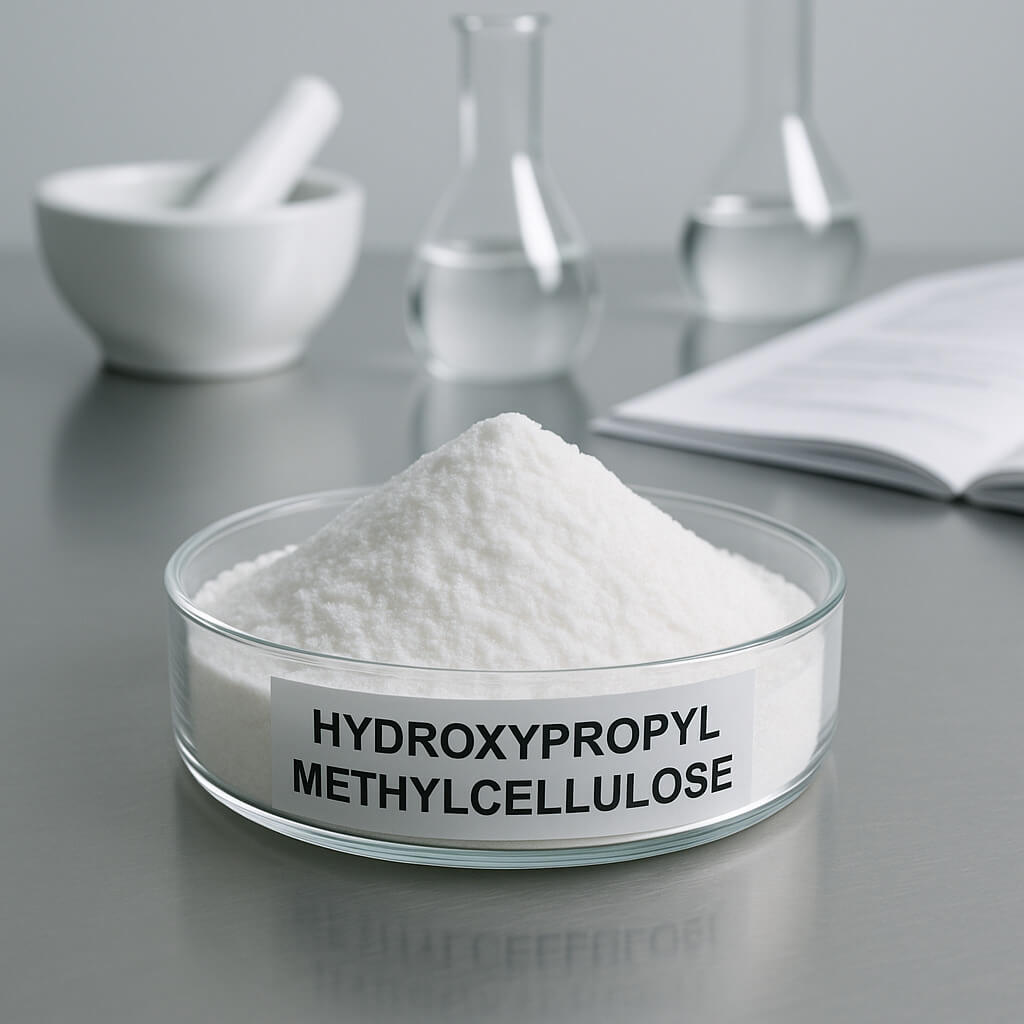Hydroxypropyl Methylcellulose (HPMC) stands as one of the most versatile excipients and functional additives in modern industry. This semi-synthetic polymer, derived from natural cellulose, offers a unique combination of characteristics that make it indispensable across pharmaceutical, construction, food, and personal care sectors. Understanding these characteristics is crucial for formulators, product developers, and purchasing managers seeking to optimize product performance and manufacturing efficiency. This article examines HPMC’s essential characteristics, offering practical insights for technical professionals who need to select the appropriate grade for specific applications.

1. What Is The Chemical Structure And Composition Of HPMC?
Hydroxypropyl Methylcellulose is a cellulose ether created through chemical modification of cellulose, the most abundant natural polymer on earth. The transformation from natural cellulose to HPMC involves a series of controlled chemical reactions that introduce specific functional groups onto the cellulose backbone.
Here’s what makes it unique: The precise balance of methoxyl and hydroxypropyl substituents on the cellulose chain creates HPMC’s distinctive characteristics, allowing manufacturers to engineer grades with tailored performance profiles for specific applications.
The basic molecular structure of HPMC consists of a cellulose backbone with varying degrees of methoxyl (–OCH₃) and hydroxypropyl (–OCH₂CH(OH)CH₃) substitution. These substituents replace hydroxyl groups on the anhydroglucose units, creating an amphiphilic molecule with both hydrophilic and hydrophobic regions.
| Structural Parameter | Typical Range | Significance | Industry Impact |
|---|---|---|---|
| Methoxyl Content (%) | 16.5-30 | Contributes hydrophobic character | Higher content increases organic solubility and thermal gelation |
| Hydroxypropyl Content (%) | 4-32 | Enhances hydrophilic properties | Higher content improves cold water solubility and surface activity |
| Degree of Substitution (DS) | 1.2-2.0 | Indicates proportion of modified hydroxyl groups | Determines overall hydrophilic/hydrophobic balance |
| Molecular Weight (Daltons) | 10,000-1,500,000 | Reflects polymer chain length | Determines viscosity and mechanical strength |
The manufacturing process involves treating purified cellulose with sodium hydroxide to create alkali cellulose, followed by reaction with methyl chloride and propylene oxide under controlled conditions. This process allows manufacturers to precisely engineer the substitution pattern and molecular weight distribution to create grades with specific performance characteristics.
Commercial HPMC is classified into different grades based on viscosity, substitution type, and particle size. The United States Pharmacopeia (USP) and European Pharmacopoeia (Ph. Eur.) use a four-digit numbering system to designate substitution types, with the first two digits indicating methoxyl content and the second two representing hydroxypropyl content.
2. How Do The Physical Properties Of HPMC Affect Its Handling And Processing?
The physical properties of HPMC significantly influence its handling characteristics, processing requirements, and performance in various applications. These properties determine how HPMC behaves during manufacturing operations and affect the quality of final products.
What you need to understand is that the physical form of HPMC can be precisely engineered to optimize handling and processing for specific applications, creating grades that range from free-flowing powders to granular materials with controlled dissolution profiles.
Particle size distribution and morphology are critical physical characteristics that affect numerous aspects of HPMC performance. Commercial HPMC grades are available in various particle size ranges, typically from fine powders (20-75 microns) to coarse granules (125-250 microns).
| Physical Property | Measurement Method | Typical Values | Processing Implications |
|---|---|---|---|
| Particle Size (d50) | Laser diffraction | 20-250 μm (grade dependent) | Affects dissolution rate, flow properties, and dust formation |
| Bulk Density | USP method | 0.25-0.70 g/cm³ | Determines volume requirements for handling and storage |
| Carr Index | Calculated from densities | 15-35% | Indicates powder flowability (lower values = better flow) |
| Moisture Content | Loss on drying | 3-5% w/w | Affects stability, flow, and electrostatic properties |
Bulk density characteristics provide important information about how HPMC powders will behave during handling, storage, and processing. HPMC typically has relatively low bulk density compared to many other excipients, which can impact formulation decisions and processing equipment selection.
Flow properties are particularly important for applications involving direct compression or high-speed filling operations. Unmodified HPMC powders often exhibit fair to poor flow characteristics due to their irregular particle shape and tendency to develop electrostatic charges. To address this, manufacturers often offer surface-treated or granulated grades with improved flow properties.
Moisture content significantly impacts HPMC’s handling characteristics and stability. HPMC is moderately hygroscopic, with equilibrium moisture content typically ranging from 3-5% under normal conditions. Excessive moisture can lead to caking, reduced flowability, and potential microbiological contamination.
3. What Solubility Characteristics Make HPMC Valuable Across Industries?
The solubility characteristics of HPMC represent one of its most commercially significant properties, directly influencing its functionality across diverse applications. Understanding these solubility behaviors is essential for effective formulation and processing.
Here’s the fascinating part: HPMC exhibits unusual temperature-dependent solubility behavior that can be strategically leveraged in various manufacturing processes and applications, providing unique functional advantages.
Temperature-dependent solubility is perhaps HPMC’s most distinctive solubility characteristic. Unlike most materials that become more soluble as temperature increases, HPMC exhibits inverse solubility behavior. At lower temperatures (typically below 50°C), HPMC readily dissolves in water to form clear solutions. As temperature increases, solubility decreases until reaching a precipitation temperature (typically 65-90°C), at which point the polymer undergoes phase separation and forms a heat-set gel.
| Temperature Range | HPMC Solubility Behavior | Application Implications | Processing Considerations |
|---|---|---|---|
| Below 5°C | Slow dissolution, high viscosity | Extended hydration time needed | Pre-dispersion in hot water may be beneficial |
| 5-30°C | Optimal dissolution, stable solutions | Ideal for most aqueous applications | Standard processing conditions suitable |
| 30-50°C | Decreasing solubility, maintained clarity | Careful temperature control required | Monitor viscosity changes during processing |
| 50-70°C | Approaching insolubility, increasing turbidity | May cause formulation instability | Consider hot/cold technique for dispersion |
| Above 70°C | Insoluble, forms heat-set gel | Can be used as functional barrier | Requires cooling for redissolution |
pH effects on dissolution and stability are relatively minimal compared to ionic polymers. As a non-ionic polymer, HPMC maintains consistent solubility across a wide pH range (approximately 3-11), making it suitable for formulations with varying acidity or alkalinity.
Solvent compatibility extends beyond water to include various mixed solvent systems. HPMC is soluble in many binary water-organic solvent mixtures, with solubility depending on the organic component and the HPMC substitution pattern. Typically, HPMC with higher methoxyl content shows better compatibility with organic solvents.
4. How Do The Rheological Properties Of HPMC Influence Formulation Performance?
The rheological properties of HPMC—its flow and deformation behavior in solution—represent some of its most commercially valuable characteristics. These properties determine how HPMC functions as a thickener, stabilizer, and processing aid across diverse applications.
What makes this particularly important is that HPMC’s complex rheological behavior combines several beneficial properties that would typically require multiple additives, allowing formulators to achieve desired flow characteristics with a single ingredient.
Viscosity profiles and measurement methods are fundamental to understanding HPMC’s rheological behavior. Commercial HPMC grades are typically classified by their nominal viscosity, measured under standardized conditions (usually a 2% aqueous solution at 20°C).
| Rheological Property | Measurement Method | Typical Values | Application Significance |
|---|---|---|---|
| Apparent Viscosity | Rotational viscometer | 3-200,000 mPa·s (2% solution) | Determines flow behavior and thickening efficiency |
| Yield Stress | Stress ramp test | 0.5-20 Pa (2% solution) | Controls sag resistance and suspension stability |
| Thixotropy Index | Hysteresis loop area | 1.1-2.5 | Indicates time-dependent recovery after shearing |
| Storage Modulus (G’) | Oscillatory testing | 1-500 Pa | Reflects elastic component and gel strength |
Shear-dependent behavior is a critical rheological characteristic of HPMC solutions. HPMC exhibits pseudoplastic (shear-thinning) flow, where viscosity decreases as shear rate increases. This behavior provides significant processing advantages—solutions flow readily during high-shear operations like mixing, pumping, or spraying, but maintain higher viscosity at rest to provide stability.
Temperature effects on solution viscosity are particularly noteworthy due to HPMC’s unique thermal behavior. At temperatures below the thermal gelation point, HPMC solution viscosity typically decreases with increasing temperature. However, as the solution approaches the thermal gelation temperature, viscosity begins to increase dramatically as polymer chains associate through hydrophobic interactions, eventually leading to gel formation.
5. What Surface And Interfacial Properties Define HPMC’s Functionality?
The surface and interfacial properties of HPMC play crucial roles in many applications, influencing phenomena such as wetting, spreading, emulsification, and stabilization. These properties stem from HPMC’s amphiphilic nature, containing both hydrophilic and hydrophobic groups.
What you’ll find remarkable is that HPMC provides moderate surface activity without the drawbacks often associated with conventional surfactants, such as irritation potential or excessive foaming.
Surface tension modification capabilities of HPMC are significant, though less pronounced than those of conventional surfactants. HPMC typically reduces the surface tension of water from approximately 72 mN/m to 42-55 mN/m, depending on the grade and concentration.
| Surface/Interfacial Property | Measurement Method | Typical Values | Formulation Impact |
|---|---|---|---|
| Surface Tension Reduction | Du Noüy ring method | 42-55 mN/m (1% solution) | Improves wetting and spreading |
| Interfacial Tension (oil/water) | Spinning drop method | 15-25 mN/m | Facilitates emulsion formation |
| Contact Angle on Hydrophobic Surface | Goniometer | 40-65° | Enhances substrate wetting |
| Critical Aggregation Concentration | Surface tension plot | 0.01-0.1% w/v | Determines minimum effective concentration |
Emulsification and stabilization mechanisms of HPMC differ from those of conventional surfactants. Rather than primarily reducing interfacial tension, HPMC stabilizes emulsions through multiple mechanisms: (1) viscosity enhancement of the continuous phase; (2) formation of a steric barrier around droplets; and (3) creation of a structured network in the continuous phase. These combined mechanisms often provide superior long-term stability compared to conventional surfactant systems.
Adhesion and binding characteristics make HPMC valuable in applications requiring cohesion between particles or adhesion to surfaces. HPMC forms hydrogen bonds with polar substrates and interacts through van der Waals forces with less polar materials, providing versatile binding capabilities across diverse substrate types.
6. How Do The Thermal Characteristics Of HPMC Impact Processing Requirements?
The thermal properties of HPMC significantly influence its processing requirements and application performance. Understanding these thermal characteristics is essential for proper material selection and process design across industries.
Here’s what you should know: HPMC exhibits unique thermal behavior that creates both challenges and opportunities in processing and application development.
Thermal gelation phenomenon represents HPMC’s most distinctive thermal property. When HPMC solutions are heated above a critical temperature (typically 65-90°C, depending on the grade), they undergo phase separation and form a reversible gel structure.
| Thermal Property | Measurement Method | Typical Values | Processing Implications |
|---|---|---|---|
| Gelation Temperature | Cloud point, Rheological methods | 65-90°C (grade dependent) | Determines maximum processing temperature in solution |
| Glass Transition Temperature (Tg) | Differential scanning calorimetry | 170-190°C | Affects solid-state processing and storage stability |
| Thermal Stability Onset | Thermogravimetric analysis | 190-220°C | Sets upper temperature limit for processing |
| Decomposition Temperature | Thermogravimetric analysis | 280-300°C | Critical safety parameter for high-temperature processing |
Glass transition temperature (Tg) for dry HPMC typically ranges from 170-190°C, though this can be significantly reduced by moisture or plasticizers. The Tg represents the temperature at which HPMC transitions from a glassy, brittle state to a more rubbery, flexible state.
Thermal stability is a critical consideration for processing HPMC. The polymer begins to show signs of degradation at temperatures above 190-220°C, with significant decomposition occurring above 280-300°C. Degradation typically involves chain scission, resulting in reduced molecular weight and altered functional properties.
7. What Safety And Regulatory Considerations Apply To HPMC Usage?
The safety profile and regulatory status of HPMC are fundamental to its widespread use in pharmaceuticals, food products, and personal care applications. These aspects establish HPMC as a material of choice for applications with direct human contact or consumption.
It’s worth emphasizing that HPMC’s exceptional safety profile has been established through decades of use and extensive toxicological studies, making it one of the most trusted polymers for sensitive applications.
Toxicological profile and safety assessments consistently demonstrate HPMC’s excellent safety record. Acute toxicity studies show extremely low toxicity, with oral LD50 values typically exceeding 5,000 mg/kg body weight. Chronic toxicity studies have found no adverse effects even at high doses over extended periods.
| Regulatory Aspect | Status in Major Markets | Testing Requirements | Industry Implications |
|---|---|---|---|
| FDA Status (US) | GRAS for food (21 CFR 172.874), Approved pharmaceutical excipient (USP/NF) | Identity, purity, heavy metals, microbial limits | Widely accepted for food and pharmaceutical applications |
| EU Status | Food additive E464, European Pharmacopoeia compliant | Residual solvents, heavy metals, microbiological quality | Permitted across EU member states with established specifications |
| Japan Status | JSFA approved food additive, JPE pharmaceutical excipient | Residual propylene oxide, heavy metals, arsenic | Accepted in Japanese market with specific purity requirements |
| China Status | GB approved food additive, ChP pharmaceutical excipient | Lead, arsenic, residual solvents, loss on drying | Growing acceptance with increasing quality standards |
Regulatory status across global markets is generally favorable, though specific requirements vary by region and application. In the United States, HPMC is FDA-approved for pharmaceutical use (included in the USP/NF) and is Generally Recognized as Safe (GRAS) for food applications. In Europe, it is approved as a food additive (E464) and complies with European Pharmacopoeia standards.
Environmental impact considerations are increasingly important in material selection decisions. HPMC is generally considered environmentally favorable compared to many synthetic polymers. As a modified natural polymer, HPMC is ultimately biodegradable, though the rate of biodegradation depends on environmental conditions.
Conclusion
The characteristics of Hydroxypropyl Methylcellulose (HPMC) represent a remarkable combination of properties that make this polymer exceptionally versatile across diverse industries. From its unique chemical structure and physical form to its solubility, rheological, surface, thermal, and safety profiles, HPMC offers formulators and product developers a multifunctional ingredient that can address multiple formulation challenges simultaneously.
Understanding these characteristics allows technical professionals to select the optimal HPMC grade for specific applications and to anticipate how the material will behave under various processing and use conditions. The interrelated nature of these characteristics means that changing one parameter—such as substitution pattern or molecular weight—often affects multiple functional properties, requiring a holistic approach to grade selection and formulation development.
For manufacturers and product developers working with HPMC, this knowledge translates to more efficient material selection, improved product performance, and potentially reduced costs through formulation optimization.
FAQ
Q1: How do different grades of HPMC compare in terms of their characteristics?
HPMC grades differ primarily in three key characteristics: viscosity (determined by molecular weight), substitution type (ratio and distribution of methoxyl and hydroxypropyl groups), and particle size. Viscosity grades range from 3 mPa·s to over 200,000 mPa·s (2% solution), directly affecting thickening efficiency, film strength, and binding capacity. Substitution types are classified by pharmacopeia designations (e.g., HPMC 2208, 2906, 2910), with higher methoxyl content increasing thermal gelation and organic solubility, while higher hydroxypropyl content improves cold water solubility and surface activity. Particle size grades range from fine (20-75 microns) to coarse (125-250 microns), affecting dissolution rate and flow properties.
Q2: What are the key differences between HPMC and other cellulose derivatives?
HPMC offers a distinct characteristic profile compared to other cellulose derivatives. Versus Methylcellulose (MC), HPMC provides better cold water solubility and lower thermal gelation temperatures, though MC forms stronger gels. Compared to Carboxymethylcellulose (CMC), HPMC is non-ionic and thus maintains stable viscosity across a wider pH range but provides less electrolyte tolerance. Hydroxyethylcellulose (HEC) provides higher clarity in solution than HPMC but lacks thermal gelation properties. Ethylcellulose (EC) is water-insoluble unlike HPMC, making it suitable for water-resistant applications. Hydroxypropylcellulose (HPC) offers better organic solubility than HPMC but typically at higher cost.
Q3: How stable are the characteristics of HPMC under various storage conditions?
HPMC characteristics remain remarkably stable under proper storage conditions. Dry HPMC powder maintains its viscosity and functionality for 2-3 years when stored in sealed containers at 15-30°C and relative humidity below 60%. Higher temperatures (>40°C) can cause gradual degradation through oxidation or hydrolysis, while excessive humidity (>70% RH) may lead to caking and reduced dispersibility. Freezing conditions do not significantly affect dry HPMC but may impact the structure of HPMC solutions or gels. In solution, HPMC is most stable at pH 6-8, with accelerated degradation occurring under strongly acidic or alkaline conditions.
Q4: Which characteristics of HPMC are most critical for pharmaceutical applications?
For pharmaceutical applications, the most critical HPMC characteristics depend on the specific dosage form and function. In controlled-release matrix tablets, viscosity grade and substitution type directly determine drug release kinetics—higher viscosity grades create more robust gel layers that slow drug diffusion, while substitution type affects the hydration rate and gel strength. For tablet film coatings, molecular weight and substitution type influence film formation, adhesion, and dissolution characteristics, with HPMC 2910 (high methoxyl) often preferred for its film properties. In capsule manufacturing, thermal gelation temperature and gel strength are crucial for shell integrity. For ophthalmic solutions, solution clarity, viscosity stability, and biocompatibility are essential.
Q5: Can the characteristics of HPMC be modified post-manufacturing?
While the fundamental molecular characteristics of HPMC (substitution pattern and molecular weight) are fixed during manufacturing, several post-production modifications can alter its functional characteristics. Physical modifications include particle size reduction through milling to increase dissolution rate, surface treatment with glyoxal or other agents to improve dispersibility, and agglomeration to enhance flow properties. Blending different HPMC grades can achieve intermediate characteristics or performance profiles not available from standard grades. Formulation approaches can significantly modify HPMC functionality—adding salts to alter solution properties, combining with other polymers for synergistic effects, or incorporating plasticizers to modify film characteristics.




